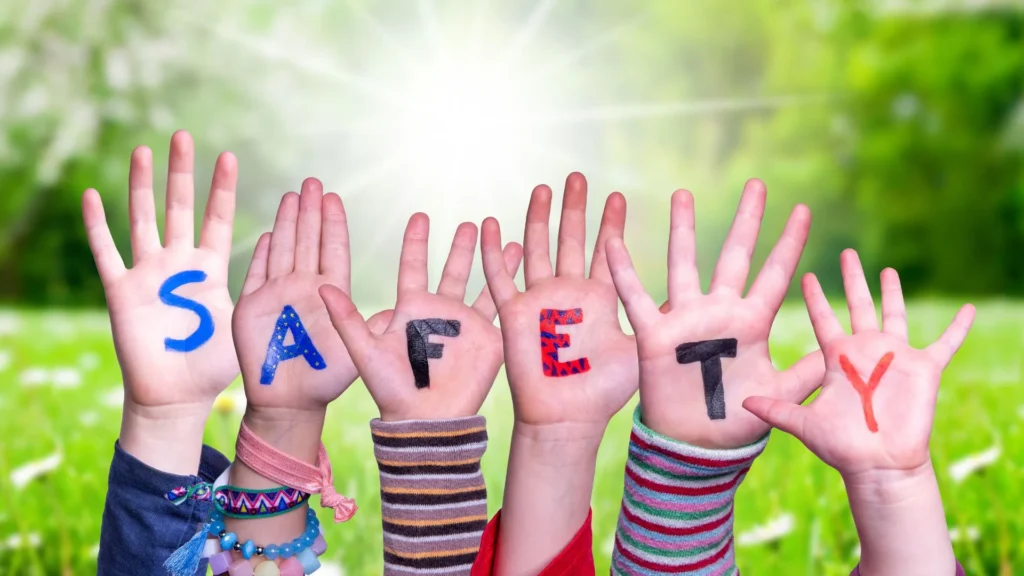
Child Internet Safety
In today’s interconnected world, ensuring child internet safety is crucial. The Internet serves as a canvas for learning, entertainment, and communication, making it imperative for netizens, especially parents and guardians, to embrace key Internet security principles. Understanding the importance of child internet safety involves protecting personal information, navigating social media safely, and being vigilant against online threats like cyberbullying.”
Protecting Personal Information
We must keep our special online secrets like names, email IDs, passwords, and contact numbers safe. These need to be hidden from strangers online ensuring a sense of security in the digital world. Create a strong password for their accounts to prevent unauthorized access.

Navigating Social Media Safely
Social Media is like an ocean, so many places are not good to visit. Avoid visiting such places. Kids should step carefully, understand privacy settings, avoid sharing too much, and report anything that feels uncomfortable. Here are some additional points that we need to consider while dealing with social media:
- Verify Friend Requests: Before accepting friend requests, ensure that the person is someone known in real life. Avoid connecting with strangers to maintain a safer online circle.
- Think Before Posting: Teach the importance of thinking twice before posting anything online. Remind them that once something is posted, it’s challenging to completely remove it from the internet.
- Limit Personal Information: Advise children to limit the amount of personal information on their profiles. This includes details like school names, home addresses, and phone numbers.
- Understand about Geotagging: Educate about the risks associated with geotagging photos or sharing location information. Encourage kids to turn off location services when posting on social media.
Understand about Cyberbullying
Cyberbullying is when someone uses the internet or technologies like smartphones and social media to harm, harass, or frighten others. It involves sending mean messages, spreading rumors, or sharing hurtful images online to hurt or embarrass someone. This can have a serious impact on a person’s emotions or well-being. It is important to treat others with respect. If kids encounter any such experiences, inform a trusted adult. Make use of the reporting and blocking features on social media to prevent further communication from the cyberbully. Also, never respond to them as it may escalate the situation. Learn about online safety, cyberbullying prevention, and responsible internet use. Be careful while sharing personal information online. Schools and parents can work together to create a supportive environment and address cyberbullying effectively.
Guarding Against Diverse Online Risks
The internet represents an insecure channel for exchanging information, leading to many online threats like phishing, email spoofing, chat spoofing, etc. Phishing is a form of cybercrime where the individuals are being tricked by posing as a trustworthy source to obtain sensitive information, such as usernames, passwords, credit card details, or other personal information. Email spoofing and chat spoofing refer to manipulating the sender’s ID to appear as if it is coming from a trusted source. To prevent this, always identify the user through additional means before communicating with them. Use email and chat security features like two-factor authentication. Make sure to verify the authenticity of communication channels before sharing sensitive data.
Web browsers have built-in password management for storing passwords used on sites. This helps users to log in without entering the username and password every time. However, it is not advisable to leave the browser to store this data, especially on shared devices. Clear personal data and passwords from shared devices.
Make use of firewalls and encryption software for safeguarding digital assets and communications. Firewalls can prevent unauthorized access to or from a private network, monitor and manage network traffic, and establish a line of defense against various cyber threats. Encryption is a process that converts information into a code to prevent unauthorized access. Encryption software ensures that data remains confidential and secure during transmission or storage.
Computers are prone to attacks from’ Malware’ software that can harm the system. Malware tracks browsing behavior or transmits personal data. Antivirus and antispyware programs offer real-time protection monitoring the computer for any changes by malware. Keep these programs up to date to protect from recent threats.
In the vast and exciting world of the internet, where learning, fun, and connections are abundant, all of us must be mindful guardians of our digital spaces. Protecting our personal information, navigating social media wisely, and standing up against cyberbullying are lessons that apply to everyone. Just like in the physical world, we want our online experiences to be safe, enjoyable, and respectful.

Practices like two-factor authentication and staying informed about cybersecurity trends empower us to be responsible and savvy digital citizens. Implementing tools like firewalls, encryption software, and antivirus programs becomes a collective effort to ensure a secure online environment.
So, whether you’re a curious kid exploring the wonders of the internet or someone who has been navigating the online world for a while, let’s make internet security a shared priority. Together, we can create a digital space where everyone can confidently learn, connect, and explore.


